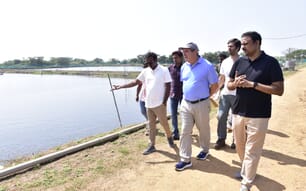Researchers at Nofima Marine have studied stem cells in salmon for ten years, and are the only ones who have documented how nutrients influence the development of unspecialized cells into fully developed muscle, fat and bone cells.
New functions in fat cells discovered

Through the stem cell research project, Nofima Marine has produced an extremely useful research tool that makes it possible to study and map the fish cells’ flexibility and pattern of development.
“We have discovered among other things that the cells perform a greater variety of functions than we used to believe. Fat cells in salmon, for example, secrete hormone-like substances that are important for regulating both energy utilization and inflammatory reactions. This in turn means that the type and amount of fat contained in the fat cells are more significant than previously thought,” says Ruyter.
It also appears that the various fatty acids influence the development of bone, fat and muscle cells. For instance, omega-3 fatty acids promote bone cell development from unspecialized stem cells while preventing fat cell development. In practice this may mean that an adequate level of omega-3 fatty acids in feed is important for the tissue development and health of farmed fish in certain stages of the fish’s life.
Optimal feed for various stages of life
The research tool gives a sound basis for further, more targeted studies, which in turn may improve health in fish. Just like mammals, fish have a large number of stem cells in the early stages of life, and research results suggest that it is possible to influence the number of these cells at a young age. This may then affect, for example, obesity or muscle quality later in life.
“We can study how stem cells react to different feed ingredients, and with this type of study we can increase our knowledge about the optimal feed composition for the different stages of the fish’s life. We can change the anticipated development of a stem cell by adding certain nutrients so that, for example, stem cell precursors from fatty tissue can be redirected towards a muscle cell,” says Ruyter.
International pioneers
“We were the first to isolate stem cells from visceral fat in salmon and get them to develop into mature fat cells. We were also the first to get stem cells from salmon muscle to develop into bone cells. In cooperation with Senior Researcher Aleksei Krasnovs and through the use of MicroMatrix technology, we were also the first to describe how a large number of genes help to direct the development of the cells,” she explains. The results from these studies show that the development of fish cells has a surprising number of similarities with that described for human cells.
According to Ruyter, it was not difficult to obtain the actual stem cells, which is a relatively simple procedure similar to the one established for human research. There have been much greater challenges associated with adapting, mapping and describing the development of stem cells from an early stage through to mature cells.
“It has taken us several years to reach the point we are at today. Other groups have now begun to work with stem cells from fish, but we are still the pioneers in this field,” notes Ruyter, adding that they will soon begin similar analyses of stem cells from cod.
More research needed on the entire life cycle
Bente Ruyter and her colleagues want to follow up on the results of the stem cell research by studying live fish. The type of fatty acids selected is probably more important for fish in the very early, rather than later, stages of life when the composition of nutrients will likely have the greatest affect on the fish’s future cell division. Just as findings have shown that the nutrients received by a human foetus are highly significant for the development of obesity later in life, researchers believe that the same conditions apply to fish.
“To increase our knowledge about the significance of nutrient composition, we want to study how access to nutrients affects the broodstock, which in turn affects egg quality, larvae and the harvest size fish. Foetal nutrition is a hot topic in human research right now, and it would be very interesting to follow this up for fish. Although life-cycle studies are expensive, they are the only means we have of being totally certain that our cell results are correct since there are influential factors that we cannot study at the cell level,” Ruyter concludes.
The stem cell project is funded by the Research Council of Norway as part of a five-year strategic institute programme.




